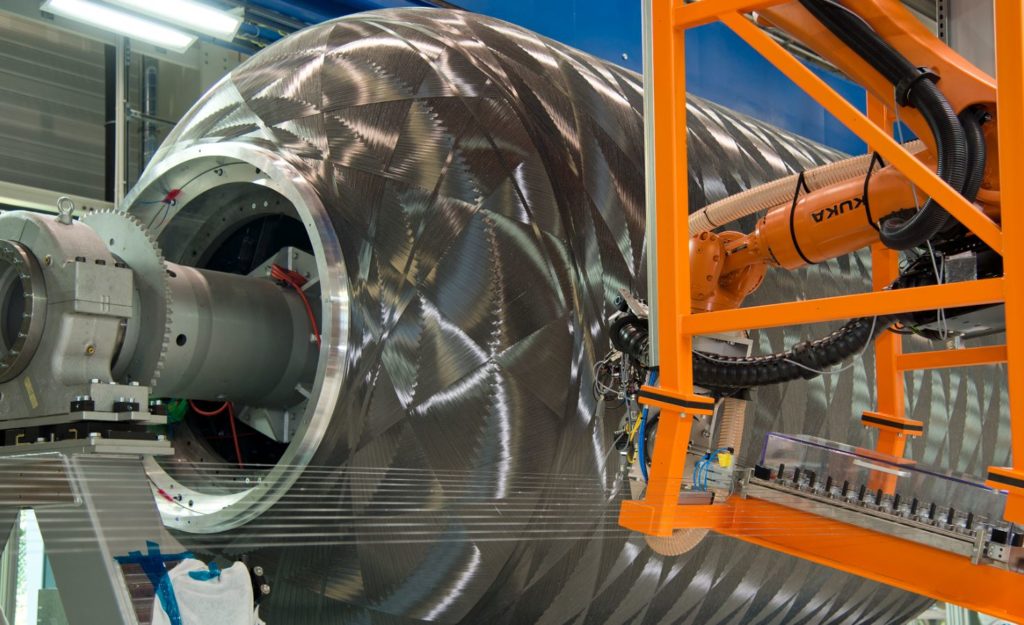The Institute of Structures and Design (BT) has a highly-recognized and long-lasting expertise on composite technology and space applications. Across its sites in Augsburg and Stuttgart focus is laid on the entire process chain, from design and manufacturing technologies to flexible automation solutions for the production of high-performance lightweight structures. The interdisciplinary team of experts from materials sciences, manufacturing technology, design, structural mechanics and simulation are the basis for innovation.
As such, the department for space system integration of DLR BT has proven expertise in the design and building of re-entry aerospace structures with effusion cooling, heat shielding, metal-PMC (polymer matrix composites) and metal-CMC (ceramic matrix composites) hybrids.
For the next generation ARIANE rocket, DLR BT currently develops a composite upper stage to surpass lightweight metal solutions, both in terms of costs and performance. Baseline for the approach is the use of carbon fiber prepregs with high fracture toughness, thermoplastic matrices, processed by automated fiber place with optimized lay-up designed to manufacture. Materials and processes are currently under investigation in the project PROCOMP to assure readiness for industrialization.
Infrastructure for Production
The institute operates two facilities for automated fiber placement (AFP). At the site in Stuttgart laser-based in-situ tape placement is developed for industrial application. In addition, flashlampAFP and dry fiber placement (DFP) is investigated in Augsburg. Full-scale production of large aerospace structures can be demonstrated on a flexible multi-robot platform. From material characterization, design, to data acquisition and process simulation all aspects from fundamental to applied research are covered.
In a joint endeavor, DLR BT together with MT Aerospace have successfully proven DFP and vacuum infusion technology for carbon fiber-reinforced (CFRP) booster casings. With a diameter of 3.5 meters and a length of 6 meters, the booster successfully met all representative requirements as seen during an Ariane launch, simulated by pressure loads of over 125 bar.
The DLR ATEK primary structure for a sounding rocket produced by in-situ thermoplastic AFP has been selected as a finalist for the JEC Innovation Awards 2019.
German Aerospace Center (DLR)
Institute of Structures and Design
Lars Brandt · E-Mail: lars.brandt@dlr.de · DLR.de
